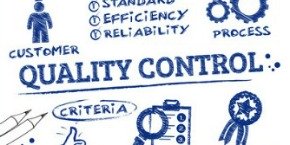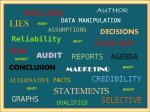Writing A Formal Business Letter
Here are a few key points to be remembered in writing formal business letters.
Remember that doing this right will improve your image as a serious business and affect your credibility.
Purposes
- Informing
- Instructing
- Recommending
- Describing
- Persuading
- Reporting
- And responding to customers, clients, government bodies (i.e. revenue), shareholders, legal bodies and the public in general.
Formal letters are almost exclusively external forms of written communication, but are also useful for the internal communications.
Structure Of A Formal Business Letter
The following 11 components make up a good business letter:
1. Sender’s contact details; Company name and address
2. Date
3. Addressees’
4. Every letter, no matter how brief, should be given a title which reveals instantly what it is about. A reference is given to make later identification possible. This reference number is usually a running number 2013-09-452 or “Author’s initials/Project No/Date”. Some people use a reference number of the file in which the letter will be kept.
5. Formal Salutation: “Dear John” / “Dear Mr Brown” depending on the degree of formality required, otherwise “To whom it concerns”, “Dear Sir or Madam”
6. Give a brief introduction as to the purpose of the letter.
7. Main body of letter: this is where you describe the details of the purpose of the letter.
8. Most wanted response: Use a brief paragraph outlining the response you would like to get, i.e. agreement to a proposal, acceptance of an invitation, return of documents, etc.
9. Final paragraph giving any other relevant information.
10. Closure: The closure will round off your business letter by using terms such as “Yours truly” “Very truly yours”, “Yours sincerely” “Sincerely yours” or if you know the name of the person “Yours faithfully”.
11. Final Notations: Two lines below your typed signature, you can add the final notations. For example, when you are sending a copy to others, write “CC:” and the names of the people in alphabetical order.
Advantages and Disadvantages of Formal Business Letters
- There is a permanent record of views or opinions expressed that can be held up in a court of law.
- People have time to give serious consideration to points raised before replying.
- Formal letters will however, slow down decision making.
- The letters may be ignored.
- Confidential information may land into the wrong hands.
Great Tips on writing a formal letter
1. Do not say things more than once unless they are so important that they may need repeating. And always stick to one topic alone!
2. Check that any instructions, procedures, references etc occur in a logical order. Don’t assume that the other person knows what you mean. Check how clear your letter is. Will your addressee really be able to carry out your most wanted response?
3. Use an appropriate tone. Is your message written in a positive tone? The tone of your letter will improve the chances that your request will be appropriately dealt with. Have you included the reasons behind your request? Or is your letter so brief that your addressee might feel there is no need to return the courtesy - that your message is abrupt and rude - without need for response!
4. Accuracy: is the spelling and grammar correct? Are the details in your letter correct and not open to misinterpretation?
5. Formality Check: The degree of formality is entirely dependent on the nature of the business at hand and the relationship with the addressee. Always be aware when you are writing a formal business letter that you can never quite sure in whose hands this letter will finally land
6. Finally: re-read and check your letter. Read your letter as if you were the one receiving it. Make any necessary changes at this point.
Note:
- Be aware also of cultural differences when you are writing to people of other cultures. For example, in the United States, it is considered normal to address people by their first name.
- In many other countries this may come across at best amusing, at worst, offending, where the expectation is that formal letters are only to be written with title and surname.
- In some cultures, the family name must come first and in others, the qualification is part of how you address the person in question, i.e. Herr Doktor Juergen Braun, Frau Diplom Ingenieurin Sabine Meyer.
You may also want to look at these pages
(Just click on the Picture )
















 My name is Martha and I have worked for over 30 years in various aspects of business and in various countries, right around the world.
My name is Martha and I have worked for over 30 years in various aspects of business and in various countries, right around the world.